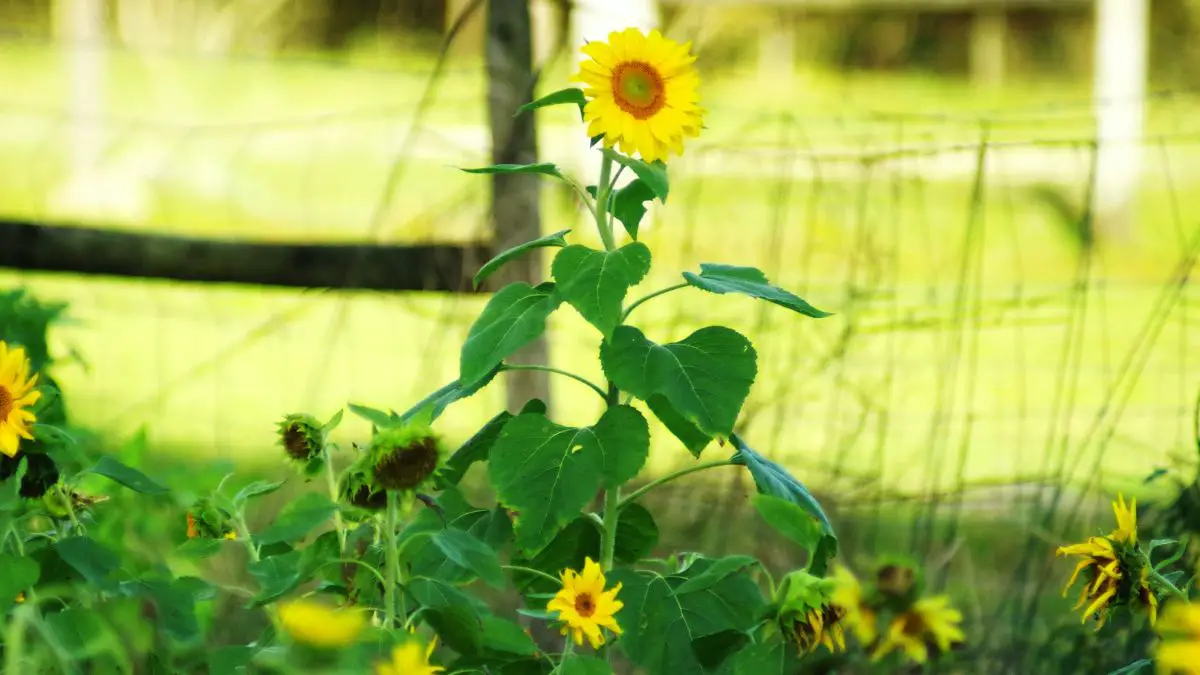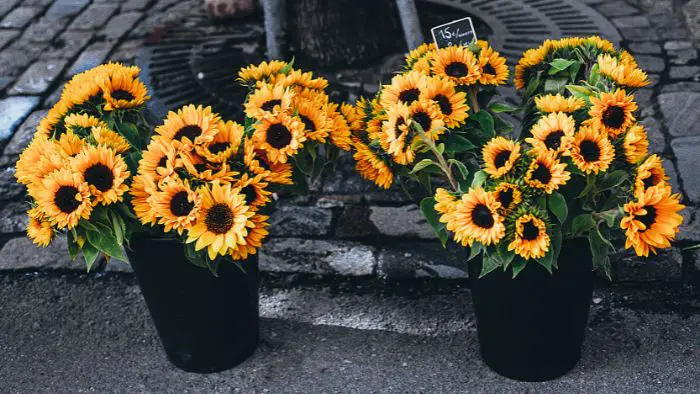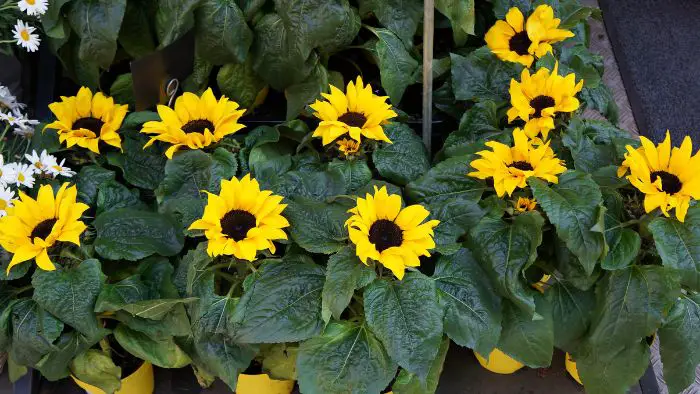Last Updated on December 9, 2022 by Guillermina
Sunflowers are a beautiful sight to behold. These golden-hued blooms have many different uses such as ornamental decoration, provide tasty and nutritious food in their seeds and oils, and make the perfect addition to any garden. But a lot of sunflower growers often ask the question, do sunflowers grow back every year?
Because some plants grow back every year while some die and need to be replanted, it is important to know if your sunflowers will grow back after the initial planting so you can properly plan for the future.
About Sunflowers
The sunflower falls under the genus Helianthus. This genus has about 70 different species of sunflowers, which belong to the daisy family, Asteraceae. Sunflowers are all native to North and Central America, except for three species that are native to South America.
Sunflowers also come in different, stunning colors which give you a wide selection range. To read more about the different colors of sunflowers, go to: https://homeguides.sfgate.com/different-colors-sunflowers-58222.html.
Do You Have To Replant Sunflowers Every Year?
Will you have to go through the trouble of replanting your bush of roses every year? Well, the answer to this is can be either yes or no. And here is the reason why.
The different sunflower species can be either annual or perennial. The perennial species will bloom each year and keep coming back, so you do not have to continually plant them. They require adequate care, sufficient sunlight, and adequate nutrition to thrive, and they will continually bloom every year. The annual kind however will only bloom once, and then you will need to re-plant them if you want to keep enjoying their beauty. Annual sunflowers will typically be labeled as Helianthus annuus, but if you would like to purchase seeds and are unsure, it would be best to consult your local gardening expert.
Sunflower Growing Conditions
Sunflowers enjoy the warmer summer months but do not do well in extremely hot weather. If you want your sunflowers to thrive, you will need to provide them with ideal growing conditions.
You will first need to identify the best place in your garden to do so. Sunflowers do best in open places where they can get full sunlight. They can also be planted in flower pots so they can be moved around. Six to eight hours of sunlight is ideal for them to thrive.
You will also need to make sure that the area you plant them in provides sufficient room for them to grow tall as they can reach up to 120 inches in height.
To improve your chances of success with growing these beauties, plant them after the danger of freezing. They do not like very cold temperatures and may get damaged if exposed. Plant when the soil has a temperature that averages between 55 and 60 degrees Fahrenheit.
In addition to the temperature, make sure that the pH of the soil you plant in is alkaline, with a pH level of 6.0 to 7.5. Nutrient rich loam soil with good drainage is best to give you long lasting, healthy and beautiful blooms.
Plant your rows of sunflowers approximately two to three feet apart. While fertilizing is not necessary for sunflowers, it can help encourage blooming.
Give your small and newly planted sunflower plant about 3 to 4 inches of water from the root. And as the plant grows and matures, you will need to deep water the plant at least once per week.
How Long Do Sunflowers Bloom Before They Die?
The question of how long sunflowers will bloom before they die can also be answered by the type of species the sunflower in question is. If the sunflower is the annual type, it will bloom only in the first year you plant it, and then it will die.
If it is a perennial sunflower, it will typically not bloom until at least the first year after being planted, it will then continue to bloom for as long as you continue to take provide it with good care and nutrition.
Where Do Sunflowers Come From?
The sunflower is native to North America. It was first grown by indigenous tribes there over 4500 years ago. It has however been introduced to many other parts of the world where it is widely grown and extensively traded.
Since the sunflower has become a very important oilseed crop, it has been bred to increase its size and productivity. The first of these breeding programs were undertaken in Russia, and increased the head size and improved the oil content from about 28% to almost 50% in 1860.
These newly bred varieties were re-introduced to the US. Since the first breeding was carried out, more have been done and as a result the sunflower seed has increased by over 1000%.
Currently, sunflowers are being cultivated in countries such as Ukraine, Russia, European Union, Argentina, Turkey, and the U.S., and these are the top producers, with 86% of the world’s total production.
Conclusion – Do Sunflowers Grow Back Every Year?
Everyone loves sunflowers, and every grower of these flowers will definitely want to know whether or not their flowers will grow back. The information and knowledge you have gained from reading this article will have helped you with knowing and identifying which types and species of these flowers will grow back, and which will not.
Keep in mind that the are two different types of sunflowers annual or perennial. Before you plant them, make sure of the type and variety you are getting. Ask your local gardening expert, or do a bit of some internet research from reliable sources.
Once you have gotten your seeds or seedlings, plant them in the ideal place or environment and then provide them with the best care and you will get the best out of your sunflowers
If you enjoyed reading this article or found it useful, please feel free to share it with your family and friends.

An aquaculture specialist and freelance writer. Passionate about anything sustainable living, such as growing your own food, and if you can do it in conjunction with fish farming, even better! I currently work as an aquaculture researcher where I can expand and share my knowledge and skills on aquaculture, crop farming and adding value to wastewater by using it to grow food products. I enjoy reading and learning as much as possible, and writing is another avenue for me to share the knowledge I gain with others. I want my writing to inspire people to try their hand at gardening, whether indoors or outdoors. You can even start by keeping a few houseplants indoors to help you gain a bit of confidence if you need to.





